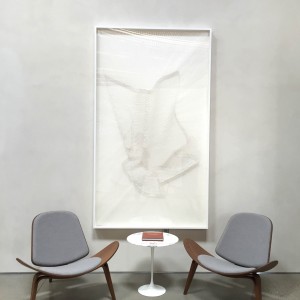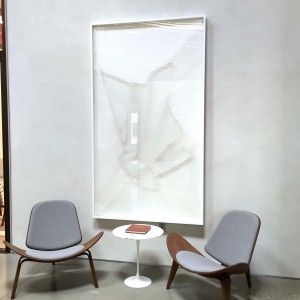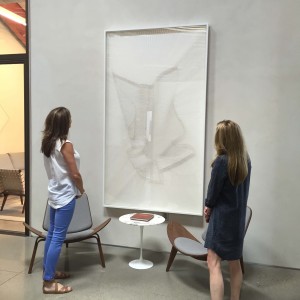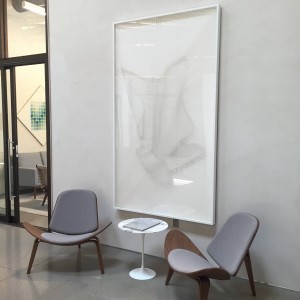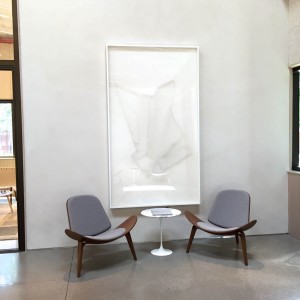Acquisitions
Refined hues shape a wonderful sense of motion
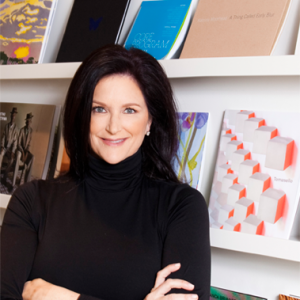 Alyson Shotz has always been interested in the forces of nature — especially gravity and light.
Alyson Shotz has always been interested in the forces of nature — especially gravity and light.
Shotz (Derek Eller Gallery) has been on our watch list — on our radar — for some time. She has a solid track record, is in many admirable museum collections, and her work consistently evolves in beautiful and intriguing directions. Shotz just keeps getting better and better.
One particular client, a private foundation in Fort Worth, had a very refined sensibility. The leadership appreciated a subtle palette and loved sculptural works. They were looking for elegant works that had strong narratives — and were also good investments.
Shotz was the perfect fit.
I love the tonality of off-white/white of this work and the sense of motion that she is able to convey in static sculpture.
This series confronts these forces using materials (wet-spun linen thread and pins) and laboriously realizes the motion of a sphere falling into a plane of space. Absolutely gorgeous and even more so in person.
What does Shotz have to say about this work?
Lea Weingarten: Talk about the organic shapes in this work. How are they derived. Are they calculated? Perhaps improvised?
Alyson Shotz: The thread drawings are very much about drawing, the physical motion of drawing, and the beauty of a line in itself. The thread reveals the action or the physicality of drawing. Also, the drawing becomes illuminated in both the actual thread line, as well as the shadow lines. The planes that are created are only implied and a kind of optical illusion.
LW: How do you execute this optional illusion?
AS: I make the templates for these drawings using a 3D animation program. I begin with a flat plane and create an environment for that plane. I then apply properties like mass, gravity, resistance, and friction to the virtual world. I let the animation play out and as the action progresses, the plane falls through space, producing a distortion and twisting of the original surface. That composition becomes the drawing in thread.
[pullquote align=”left” cite=”” link=”” color=”” class=”” size=””]Artists and scientists start with an idea and then engage in some kind of experimentation in order to get to a solution, temporary or otherwise.[/pullquote]
LW: You’re fascinated by both art and science. In your work, how do these two fields intersect?
Sculpture attempts to describe the world in a different way than science does, but I believe that both together are essential. Sculpture exists in the physical world and so it engages directly with forces that physicists are also trying to comprehend.
Another confluence between the two seems to be in the experimental or conceptual phases of these practices. Artists and scientists start with an idea and then engage in some kind of experimentation in order to get to a solution, temporary or otherwise.
LW: But the end goal is different. Or is it?
AS: In many instances, the end goal calls for a certain economy or elegance of form, message, etc.
This I find to be one of the most fascinating intersections. One often hears physicists or mathematicians say that an equation should be elegant or “beautiful”. There should be no extraneous stuff. The same can apply a successful work of art.
LW: You often utilize a monochromatic palette of whites, grays, and derivative hues. What draws you to this palette?
AS: I tend to use color inherent to the material and in many cases I use reflected color, taken or borrowed from the environment, by means of a lens or mirror, for example. The subjectivity of choosing a color is somewhat antithetical to what I’m doing currently.

